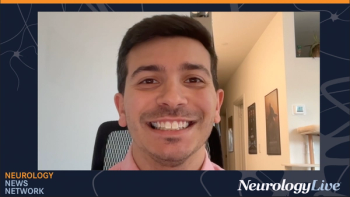Headache are a prevalent symptom in the general patient population, and research indicates that headache disorders are among the most common nervous system disorders. A previously published study in Cephalalgia revealed that nearly half of the patient population experiences headache.1 This condition affects people of all ages, races, and socioeconomic backgrounds, with a higher prevalence among women. Some patients suffer from debilitating headaches that significantly impact their quality of life and impose substantial costs on healthcare systems and the economy indirectly.
According to a prior study from the British Journal of Pain, only a small fraction of headache disorders require the expertise of a headache specialist.2 The literature reviewed in the study showed that most headache disorders could have effectively be managed by primary care clinicians or generalists with an accurate clinical diagnosis, often without the need for further investigation. Furthermore, the research in the review showed that primary headache disorders, such as migraines, tension headaches, and cluster headaches, account for nearly 98% of all headache in patients. The study also noted the importance for general neurologists to recognize secondary headaches, as they can be serious and potentially life-threatening to patients.
At the 2024 American Academy of Neurology (AAN) Annual Meeting, held April 13-18, in Denver, Colorado, Susan W. Broner, MD, medical director of the Weill Cornell Medicine Headache Program, presented a talk on “Headache Essentials.” Broner sat down with NeurologyLive® at the meeting to discuss the key diagnostic criteria and treatment recommendations for migraine and trigeminal autonomic cephalalgias (TACs). She also talked about how early diagnosis and treatment can impact the long-term outcomes of patients with post-traumatic headache. Furthermore, she spoke about central sensitization and how it can affect the prognosis of headache disorders, particularly in patients with mild traumatic brain injury (TBI).
Top Clinical Takeaways
- Early diagnosis and personalized treatment are importance in managing headache disorders effectively, preventing long-term complications.
- Differentiating between primary and secondary headache disorders is essential for proper treatment, especially in conditions like trigeminal autonomic cephalalgias.
- Understanding central sensitization and its role in headache disorders can improve patient outcomes by guiding early and targeted interventions.
NeurologyLive: What did you summarize in your presentation on headache essentials?
Susan W. Broner, MD: It was part of a larger course that was reviewing hot topics or important topics that will be for continuing certification of being board certified in neurology. The topic that I was assigned with was headache essentials, as I'm a headache specialist. I focused on the specific readings that are highlighted in this year's continuing certification process. My talk focused on helping people grasp the essentials of the diagnosis, treatment and underlying mechanisms of migraine, menstrual migraine, TACs, post traumatic headache, as well as trigeminal neuralgia and all of its features. Each one of these has unique pathophysiology and understanding the pathophysiology can often help lead us to the medications and treatments that we use.
Regarding headache diagnosis and treatments, what were some of the main takeaways from your talk?
The International Headache Society has the International Classification of Headache Disorders, which is in its third edition now, and that lists every type of headache disorder a person can have. It’s divided into primary headache disorders, things like migraine tension type headache, cluster headache, and a whole host of other ones. Those are idiopathic disorders. It was also divided to secondary disorders, which include things like vascular malformations, high and low pressure headaches, or brain trauma and so forth. Then the last category is the cranial neuropathies and facial printed pain, which includes things like trigeminal neuralgia and occipital neuralgia.
My talk focused again on a smattering of primary and secondary cranial neuropathies. Most people know the diagnostic criteria of migraine and migraine with aura and wanted to review the current recommendations for treatment based on the level of evidence for both migraine and the trigeminal autonomic cephalalgia. Also digging into the TAC and how you differentiate them, which is really in timeframe. The differentiation of those group of TAC is really important because they each have different treatments.
The other interesting component of the post traumatic headache—because we all see post traumatic headache and the diagnostic criteria—divides it into acute and chronic. A lot of people think that mild TBI, where patients generally are up and about afterwards, can have headache over the first 7 days or longer after the traumatic event. People often used to think, well, that's going to resolve in a month or two and you'll be fine and just treated symptomatically. But now if you look at the data, patients with post traumatic headache and mild TBI have a higher risk of continuing to have not only head pain, but other symptoms that may come along with TBI and post traumatic headache, concussions symptoms like sleep issues, insomnia, depression, anxiety, brain fog, and so forth beyond the 3 month mark. So, understanding that treating earlier in that paradigm of the onset of the symptoms may change the course for that person. Introducing preventative treatments, if people are having 8 or more headaches, and a month after the trauma, may really improve outcomes.
Is there anything else you think is important that should be talked about more in headache?
I think with many headache disorders, whether they're primary disorders or these post traumatic headaches, often patients look normal. In other words, they don't have external signs of a neurological condition, although they may. But I think that makes a lot of the headache disorders invisible to other people, and a lot of patients who experienced them feel invisible. So understanding the mechanisms behind it and understanding that you can look okay, but really have a lot of symptomatology, is really important to remember. That's why with post traumatic headache, it's really important to know that the imaging studies are going to be normal for mild TBI. That's part of the diagnostic criteria. If they have imaging studies that show traumatic brain injury that goes into the moderate to severe category, that is treated differently.
Certainly diagnosis, getting treated earlier may change outcomes [is another area of focus]. One of the ways that I think about that is also central sensitization, which is a process that we see in primary headache disorders, particularly migraine, where the longer headaches go on either during an attack or in between attacks. Third level neurons in the trigeminal patten nerve pathway lead to something called central sensitization and that active activation means that headache are very entrenched and harder to treat. Patients with mild TBI can develop central sensitization making their long term prognosis perhaps not as good. So, intervening to prevent that from happening can also be helpful.
Transcript edited for clarity. Click here for more coverage of AAN 2024.
REFERENCES
1. Stovner Lj, Hagen K, Jensen R, et al. The global burden of headache: a documentation of headache prevalence and disability worldwide. Cephalalgia. 2007;27(3):193-210. doi:10.1111/j.1468-2982.2007.01288.x
2. Ahmed F. Headache disorders: differentiating and managing the common subtypes. Br J Pain. 2012;6(3):124-132. doi:10.1177/2049463712459691




































